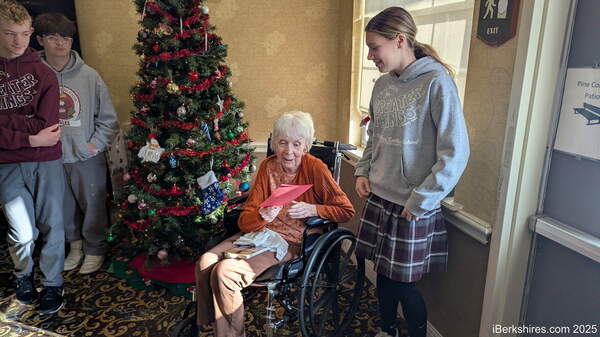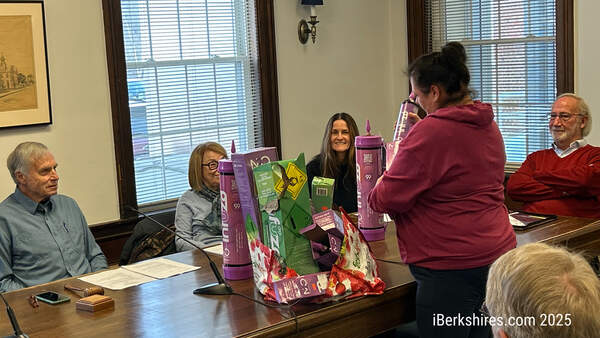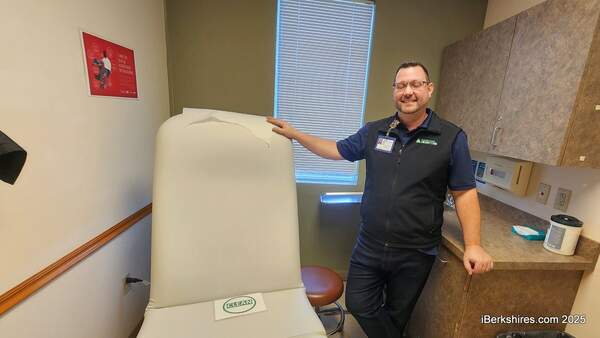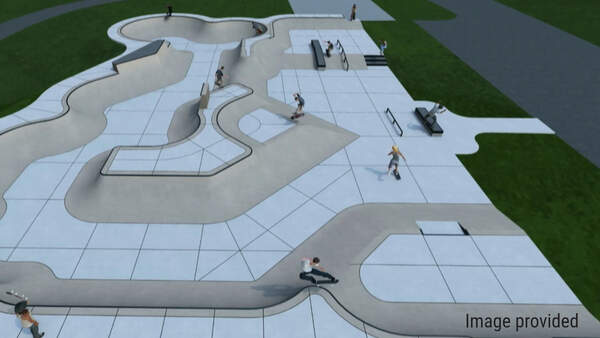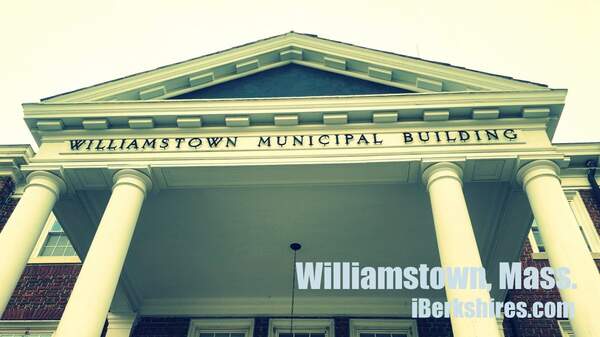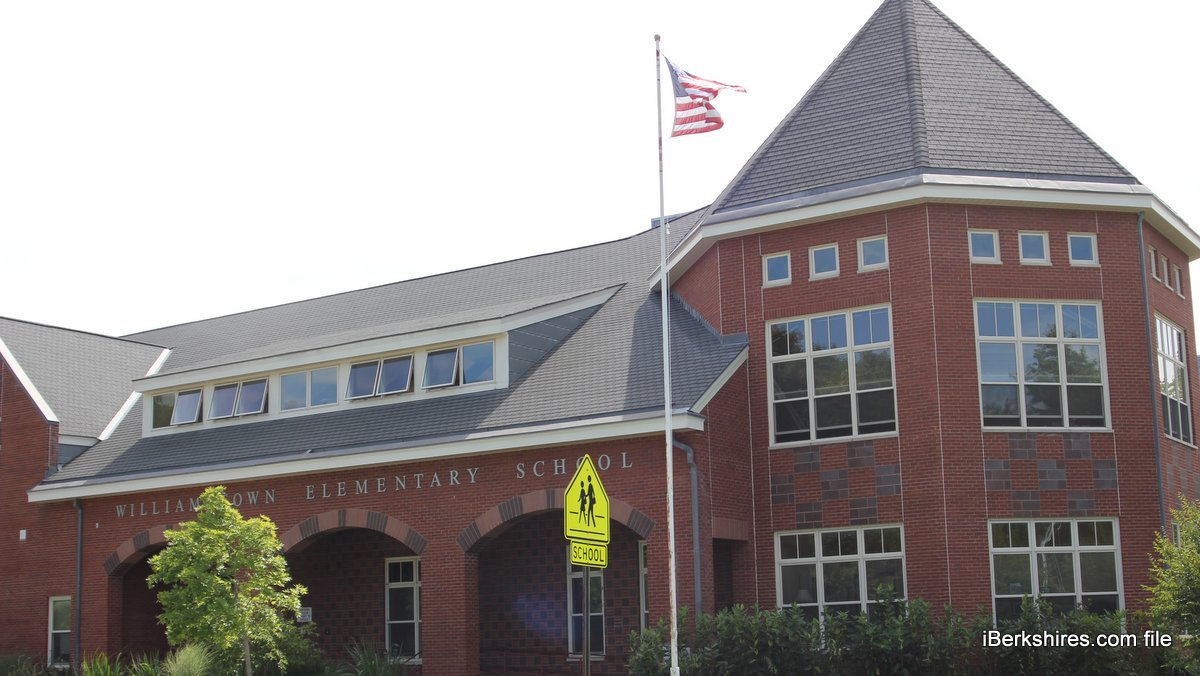
Williamstown Seeking Third Half-Day Section to Preschool
WILLIAMSTOWN, Mass. — Williamstown Elementary School officials plan to add a third half-day section to its Side-By-Side preschool program, a move they hope will ease some of the concerns that have riled the community in recent weeks.
Superintendent Douglas Dias said on Friday that the decision to add the third section was driven by a desire to accommodate all families who had applied for the program.
"It came out of us doing a lottery at the beginning of the week, and we saw a handful of kids didn't make it in the lottery," Dias said. "We said, 'What can we do to make this happen?' "
In announcing the expansion of the program for the 2016-17 school year, Dias, Principal Joelle Brookner, Director of Pupil Personnel Services Kim Grady and School Committee Chairman Dan Caplinger co-signed a three-page news release that gives the most detailed explanation to date of why the district decided to eliminate a full-day preschool option.
That decision set off a firestorm on social media, where school officials have been accused of being incompetent and "crazy" to consider changing the preschool.
Friday's news release explains that the program is and always has been designed to serve children with special needs. The target ratio for classrooms is one special needs student for each "typically developing" peer.
But as the number of special needs dropped, that ratio ballooned to as high as 1-to-4.5.
The school officials also pointed out that the existing Side-By-Side model has led to inequity of educational opportunity because enrollment for general education students has been used to fund the program (special needs children are enrolled free of charge).
"In an effort to mitigate this reliance on reserve funds, the school admission of typically-developing peers in the full-day program assumed, from a budgeting perspective, that most could afford to pay full tuition," the news release reads. "Such a practice is counter to the intent of an inclusive program."
In a telephone interview on Friday, Dias emphasized again the need for equal opportunity in the preschool program. He also said the state had raised concerns about the disproportionality of the Side-By-Side classroom.
To address the financial equity issue, Dias hopes to have an admission policy in place in which children whose families qualify for half-priced school lunches get half-priced tuition and children whose families qualify for free school lunches have their tuition waived.
"That lines up with the mission of the school and equity," he said.
And it costs money. Dias said the district on Friday afternoon was still trying to figure out just how much.
On Monday, district officials will meet with the Williamstown Finance Committee in a 7:30 meeting at Town Hall. Although the School Committee will not have a chance to consider and vote on a revised budget request until its May 11 meeting, Dias said he consulted with the Fin Comm chair and decided it was important to tell the town body that a new request was coming.
"The town has been very supportive of the school in the past, and I don't want to give the impression that we are not appreciative of what they've already given," Dias said. "We're giving them a heads up at their meeting and then going to the School Committee."
Dias said Friday that the move to add a third half-day section could be perceived as a concession to critics. And while he did not agree with that perception, he did say he hopes the move will "de-escalate the anger so we can focus on the [school's] other 430 kids."
"There will be people who say we still want a full-day program," Dias said. "I can respect that, but the needs of the students with special needs comes first. … If we go to three sections, with a ratio of 1-to-2.5 in all of the sections, I know that is better than we currently have ratio-wise, and we'd be able to include everyone who applied.
"I think it's a recognition that we have an opportunity to include all of the kids, and if we can remove the impediments for those kids who applied and cannot afford it, I support that."
The full letter released to the school community:
May 6, 2016
To the Williamstown Community:
Much has been said about the Side-by-Side program in the past few months. Let us state unequivocally: Side-by-Side is not closing. There has never been any discussion to that effect.
The purpose of this document is to clarify the current status of the program, to respond to concerns that have been raised, and to introduce a plan that is in line with the core mission of the school: "To inspire in all students a love of learning and challenge them to grow in heart and mind." This statement embodies a core value of equity and access for all students.
The community is fortunate that outside of the Williamstown Elementary School's Side-by-Side program, we have three high-quality preschool options in place, including the Children's Center at Williams, Pine Cobble, and the Williamstown Community Preschool. In fact, Williamstown voted in 2011 to allocate $250,000 in Community Preservation Act funds to support the role played by the Community Preschool. We fully endorse the town's commitment to early education.
Unlike the other preschools in town, Side-by-Side is a program designed for students with special needs. In consultation with the state's Department of Elementary and Secondary Education and Early Education division, we've continued to review the structure of our Side-by-Side program. In doing so, our program will be registered with the State Quality Rating and Improvement System (QRIS), which will enable access to future grant opportunities.
Given the number of students currently requiring special education services and placement, and their level of need, it made sense to maintain the Side-by-Side structure with two sections, one in the morning, and one in the afternoon. This model continues to give students, when required through their Individual Educational Program (IEP), the ability to access a cohesive full-day program, including rest period and lunch, with typically developing peers. By doing so, the program would truly be "side-by- side" in compliance with the State's guidelines. Close to half of the students in each class would require special education services, and the other "side" would consist of students without special needs. This differs from the current and past years, in which the percentage of students with special needs was significantly lower than for those without.
What is public pre-K in Massachusetts?
School districts in Massachusetts are required to provide services and/or programs in accordance with federal and state mandates for special education. Pre-K in Massachusetts is designed to meet the needs of special education students ages 3-4. The decisions regarding programming and/or related services are determined through the IEP process, where parents, educators, and specialists determine how to meet the specific learning needs of the child.
What is Side-by-Side?
Side-by-Side is Williamstown Elementary School's Pre-K program. Side-by-Side was established as an inclusive program in 1989 to serve children with disabilities alongside typically developing peers, or "side by side." Ideally a target ratio of students with special needs to typically developing peers would be 1:1. The program expanded to include a full-day model as the needs of the community deepened with the enrollment of a cohort of children that were medically fragile and had intensive special needs.
What are the current demographics of Side-by-Side?
Since the launch of the Side-by-Side program, the population of students with intensive special needs has declined dramatically. As a result, the number of typically-developing peers in the program has grown, resulting in a disproportionate number of typically developing students populating the program. Specifically, the current enrollment in both the full and half-day sections consists of three or fewer students with disabilities, alongside eight to nine typically developing peers. This mix of students has expanded the ratios away from a target of 1:1 to 1:4.5 and 1:3 respectively for each section. (The variation from 4.5 to 3 is due to students attending the full-day classroom for less than a full day.)
How is the current pre-K Special Education need determined?
The administration has been examining all programming at WES to determine the extent to which the needs of all students are being met. This examination has included a review of the Side-by-Side Program. As part of this analysis, the IEPs of students with disabilities were examined, including their educational placements and services. It was determined that the needs of the 8 students with IEPs who require a Pre-K placement in the 2016-2017 school year could be met by the morning and/or afternoon sessions in the already existing AM and PM Side-by-Side model. More so, the morning and afternoon sessions best enable the realignment towards the ideal ratio of 1:1 between students with disabilities and typically-developing peers.
This also brings the program into compliance with state and federal guidelines for such matching of typically-developing peers with special needs students.
Why is the Side-by-Side Program also a financial concern?
Side-by-Side has not been financially sustainable for some time. The practice has been to subsidize the program with school choice reserves, which is not viable in the long-term as this reserve fund has been spent down on other needs as well. In an effort to mitigate this reliance on reserve funds, the school admission of typically-developing peers in the full-day program assumed, from a budgeting perspective, that most could afford to pay full tuition. Such a practice is counter to the intent of an inclusive program.
There has never been any doubt that the special education needs of the community have been fully met by our side-by-side classes. However, the lack of equitable access for those in the community who do not need special education services and cannot afford the tuition charged by our public school has been a major area of concern.
How do we achieve both equity and access?
Based on further review and hearing members of the community's desire to benefit from WES's Side-by-Side program, we are proposing a third half-day section be added to the two sections already in place. This third section would allow us to accommodate all students who have submitted applications for next year, while retaining the desired Side-by-Side ratio of between 1:1 to 1:2, depending on final enrollments.
A third section also allows for ready access should any students with disabilities move to the community during the school year as there will be more open slots. This will only be feasible in providing equity and access if the town can provide us the necessary funding for this additional section while ensuring we can accept students regardless of their ability to pay. At the same time, we will need funds to ensure the program is accessible to all who are enrolled through the availability of the mid-day bus.
We will work with the town to make sure that the financial challenges of applicants to Side-by-Side can be consistently accommodated. In doing so, we will be creating a needs-based structure to allow fair and equitable access for parents wishing to enroll their children in the program.
How will we address the need going forward?
The number of sections offered each year will be determined by the number of students with special needs being placed in the program. Again, we will be moving to a target ratio in the range of 1:2 to 1:1. We will continue to refine the enrollment process for typically-developing peers to ensure that financial ability to pay tuition is not a consideration for any applicant.
Summary
By requesting that a third section, in the morning, be added to the current budget proposal, in addition to restoration of the midday bus and a sliding scale for those that have applied for our program, we will be able to accept all students who have submitted applications for 2016-2017 to our Side-by-Side program. This is in keeping with our mission statement and the educational needs of the community, and is a solid footprint as we look towards the future.
Sincerely,
Dr. Douglas Dias, Superintendent
Dan Caplinger, School Committee Chair
Kimberley Grady, Director of Pupil Personnel Services
Joelle Brookner, Principal
This story was updated to emphasize that the school officials' decision to add a third half-day section is subject to School Committee consideration at its May 11 meeting. The School Committee will have to vote on this version of the budget.
Tags: preschool, WES, WES_budget,

